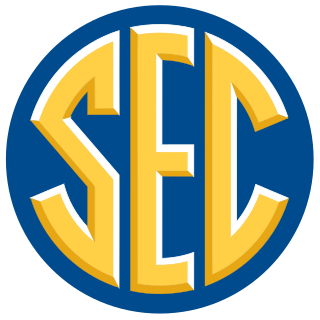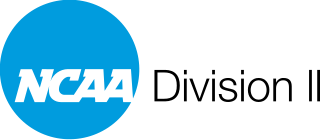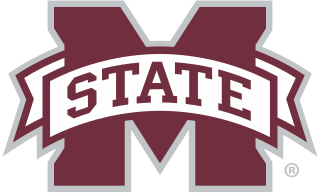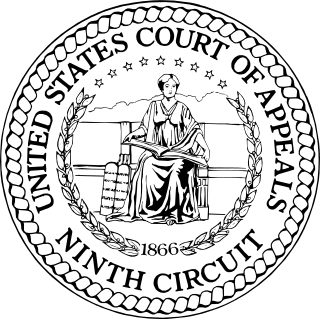
The National Collegiate Athletic Association (NCAA) is a nonprofit organization that regulates student athletics among about 1,100 schools in the United States, and one in Canada. It also organizes the athletic programs of colleges and helps over 500,000 college student athletes who compete annually in college sports. The organization is headquartered in Indianapolis, Indiana.

The Southeastern Conference (SEC) is an American college athletic conference whose member institutions are located primarily in the South Central and Southeastern United States. Its fourteen members include the flagship public universities of ten states, three additional public land-grant universities, and one private research university. The conference is headquartered in Birmingham, Alabama. The SEC participates in the National Collegiate Athletic Association (NCAA) Division I in sports competitions; for football it is part of the Football Bowl Subdivision (FBS), formerly known as Division I-A.

The National Association of Intercollegiate Athletics (NAIA) established in 1940, is a college athletics association for colleges and universities in North America. Most colleges and universities in the NAIA offer athletic scholarships to their student athletes. $1.3 billion in athletic scholarship financial aid is awarded to student athletes annually. For the 2023–24 season, it had 241 member institutions, of which two are in British Columbia, one in the U.S. Virgin Islands, and the rest in the continental United States, with over 83,000 student-athletes participating. The NAIA, whose headquarters is in Kansas City, Missouri, sponsors 28 national championships. CBS Sports Network, formerly called CSTV, serves as the national media outlet for the NAIA. In 2014, ESPNU began carrying the NAIA Football National Championship.

NCAA Division I (D-I) is the highest level of intercollegiate athletics sanctioned by the National Collegiate Athletic Association (NCAA) in the United States, which accepts players globally. D-I schools include the major collegiate athletic powers, with large budgets, more elaborate and nicer facilities and a few more athletic scholarships than Divisions II and III as well as many smaller schools committed to the highest level of intercollegiate competition.

In United States colleges and universities, basketball is governed by collegiate athletic bodies including the National Collegiate Athletic Association (NCAA), the National Association of Intercollegiate Athletics (NAIA), the United States Collegiate Athletic Association (USCAA), the National Junior College Athletic Association (NJCAA), and the National Christian College Athletic Association (NCCAA). Each of these various organizations is subdivided into one to three divisions, based on the number and level of scholarships that may be provided to the athletes. Teams with more talent tend to win over teams with less talent.

NCAA Division III (D-III) is a division of the National Collegiate Athletic Association (NCAA) in the United States. D-III consists of athletic programs at colleges and universities that choose not to offer athletic scholarships to their student-athletes.

NCAA Division II (D-II) is an intermediate-level division of competition in the National Collegiate Athletic Association (NCAA). It offers an alternative to both the larger and better-funded Division I and to the scholarship-free environment offered in Division III.

College athletics in the United States or college sports in the United States refers primarily to sports and athletic training and competition organized and funded by institutions of tertiary education in a two-tiered system.
An athletic scholarship is a form of scholarship to attend a college or university or a private high school awarded to an individual based predominantly on their ability to play in a sport. Athletic scholarships are common in the United States and to a certain extent in Canada, but in the vast majority of countries in the world they are rare or non-existent.

Bowl eligibility in college football at the NCAA Division I FBS level is the standard through which teams become available for selection to participate in postseason bowl games. When a team achieves this state, it is described as "bowl-eligible".
The Academic Progress Rate (APR) is a measure introduced by the National Collegiate Athletic Association (NCAA), the nonprofit association that organizes the athletic programs of many colleges and universities in the United States and Canada, to track student-athletes' chances of graduation. The Academic Progress Rate (APR) is a term-by-term measure of eligibility and retention for Division I student-athletes that was developed as an early indicator of eventual graduation rates.
Pat McMahon is an American former college and professional baseball coach who currently works in the New York Yankees' organization.

In college athletics in the United States, recruiting is the process in which college coaches add prospective student athletes to their roster each off-season. This process typically culminates in a coach extending an athletic scholarship offer to a player who is about to be a junior in high school or higher. There are instances, mostly at lower division universities, where no athletic scholarship can be awarded and where the player pays for tuition, housing, and textbook costs out of pocket or from financial aid. During this recruiting process, schools must comply with rules that define who may be involved in the recruiting process, when recruiting may occur and the conditions under which recruiting may be conducted. Recruiting rules seek, as much as possible, to control intrusions into the lives of prospective student-athletes. The NCAA defines recruiting as “any solicitation of prospective student-athletes or their parents by an institutional staff member or by a representative of the institution’s athletics interests for the purpose of securing a prospective student-athlete’s enrollment and ultimate participation in the institution’s intercollegiate athletics program."

Mississippi State Bulldogs is the name given to the athletic teams of Mississippi State University, in Mississippi State, Mississippi. The university is a founding member of the Southeastern Conference and competes in NCAA Division I.

John Cohen is the 16th athletic director for the Auburn University Tigers. He is former head baseball coach of Mississippi State University, where he also served as the athletic director from 2016 to 2022.

The Mississippi State Bulldogs baseball team is the varsity intercollegiate baseball team representing Mississippi State University in NCAA Division I college baseball. The program is a member of the West Division of the Southeastern Conference (SEC). The current head coach is Chris Lemonis. They have appeared in the College World Series 12 times, winning their first national championship in their most recent appearance in 2021.

The Tulane Green Wave baseball team represents Tulane University in NCAA Division I college baseball. The Green Wave baseball team competes in the American Athletic Conference and play their home games on campus at Greer Field at Turchin Stadium. They are coached by head coach Jay Uhlman.
The 2011 NCAA Division I baseball tournament began on Friday, June 3, 2011 as part of the 2011 NCAA Division I baseball season. The 64 team double elimination tournament concluded with the 2011 College World Series in Omaha, Nebraska, on June 29, 2011.

O'Bannon v. NCAA, 802 F.3d 1049, was an antitrust class action lawsuit filed against the National Collegiate Athletic Association (NCAA). The lawsuit, which former UCLA basketball player Ed O'Bannon filed on behalf of the NCAA's Division I football and men's basketball players, challenged the organization's use of the images and the likeness of its former student athletes for commercial purposes. The suit argued that upon graduation, a former student athlete should become entitled to financial compensation for NCAA's commercial uses of their image. The NCAA maintained that paying its athletes would be a violation of its concept of amateurism in sports. At stake are "billions of dollars in television revenues and licensing fees."

The NCAA transfer portal is a National Collegiate Athletic Association (NCAA) application, database, and compliance tool launched on October 15, 2018, to manage and facilitate the process for student athletes seeking to transfer between member institutions. The transfer portal permits student athletes to place their name in an online database declaring their desire to transfer. Athletes enter the portal by informing their current school of their desire to transfer; the school then has two business days to enter the athlete's name in the database. Once an athlete's name is entered in the database, coaches and staff from other schools are permitted to make contact with the athlete to inquire about their interest in visiting the campus and accepting a scholarship. The transfer portal is intended to bring greater transparency to the transfer process and to enable student athletes to publicize their desire to transfer. The transfer portal is an NCAA-wide database, covering transfers in all three NCAA divisions, although most media coverage of the transfer portal involves its use in the top-level Division I.

















